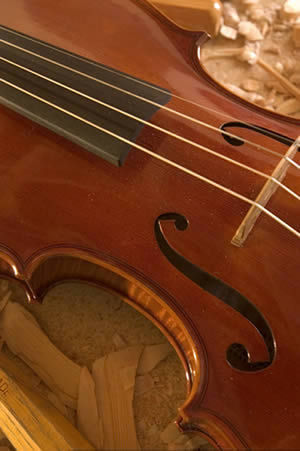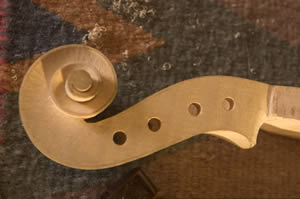

Innovative Features:
- Short string length (360 mm) for a 407mm body – feels like a 15 3/8” viola with easy-to-finger notes.
- Short stop length (distance between the top edge at the neck and the bridge) is accomplished by moving the corners and f-holes toward the neck. This keeps the 2:3 proportion so that notes are as easy to find as on a violin.
- Higher overstand (distance between the fingerboard and the top of the neck joint) helps ease clearance of upper bout.
- Narrow upper bout with sloping shoulders – makes for ease of playing higher notes.
- Small violin f-holes on longer body (407mm) help acoustically support the lower notes on the viola by lowering the “blow tone” (Helmholz) resonance.
- Large C bout area with wide base-bar placement and correspondingly wide bridge helps push sound out like a larger viola.
- Cut of bridge designed with low center of gravity for ease of string activation.
- A viola’s body length should be around 20 inches (the wavelength of the G string) to provide the acoustical support needed from the lowest notes to the highest. The viola would then be as well-designed as the violin or cello. Modern music, the choice to hold the viola like a violin instead of vertically like a cello, the relevant physical features of the player, the possibility of tendonitis, are some of the factors that dictate “what size” viola may suit a particular player.